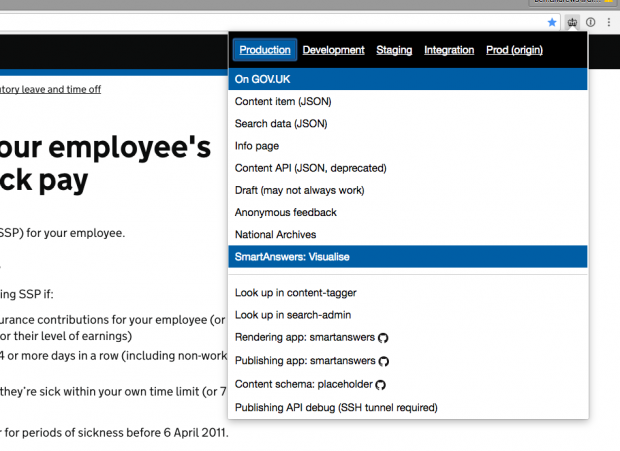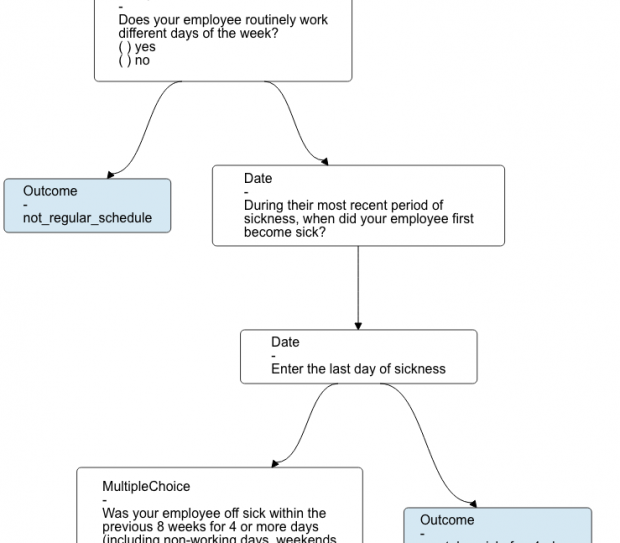One part of the Content Tools team mission is to help content designers within GDS be more effective at what they do. To make marginal gains in a variety of areas that collectively add up to a lot. The following blog post illustrates one of the things we’ve done to do just that.
One ’product’ we have on GOV.UK is called ‘smart answers’. A smart answer is a format that we use to take complex policy and translate it into a simpler, more personalised answer. Think of it as a series of questions and answers that allows a user to drill-down into occasionally quite complex legislation, giving only the information relevant to that user’s situation and need, jargon-free.
Updating a Smart Answer involves close collaboration between a department’s subject matter expert, a GDS content designer and a GDS developer. This is to ensure the accuracy and clarity of content is balanced with some of the technical restrictions the smart answer format currently imposes.
It’s both a content and code-logic challenge and this is sometimes quite time consuming to get right. It can be hard for external stakeholders to understand these restrictions and build a mental image of the ‘decision gate logic’ that works behind the scenes.
This back and forth process, between the three people involved, is currently done using a shared Google Doc with an agreed method of marking up and communicating the changes. This has some advantages, but the downside is that sometimes understanding and subtlety is lost in translation.
To make things a little easier we made a browser extension that adds a visualisation of this logic to the live smart answer page in the browser, and for ease of use we included it in the ‘GOV.UK toolkit extension’.
To see the logic visualisation, all a content designer or subject matter expert needs to do is click on ‘SmartAnswers: Visualise’ in the browser extension, whilst on the relevant smart answer content.

This adds ‘/visualise’ to any smart answer URL - which then loads a visual interpretation of the logic in the same browser tab. So, if you can’t use the extension you can still access the same visualisation by adding ‘/visualise’ on the end of any smart answer URL.

It’s a small change, but one that we hope helps to incrementally reduce the complexity and time it takes to update a smart answer. It works well in most cases, but on the bigger and more complex smart answers (for example ‘Getting married abroad’) the page can get a little cramped. That’s something for us to look at in the next iteration.
This is just one example of the work we have been doing to help content designers on GOV.UK. There’s a lot more to come from the Content Tools team.
Ben is the Content Tools product manager. Follow him on Twitter.
